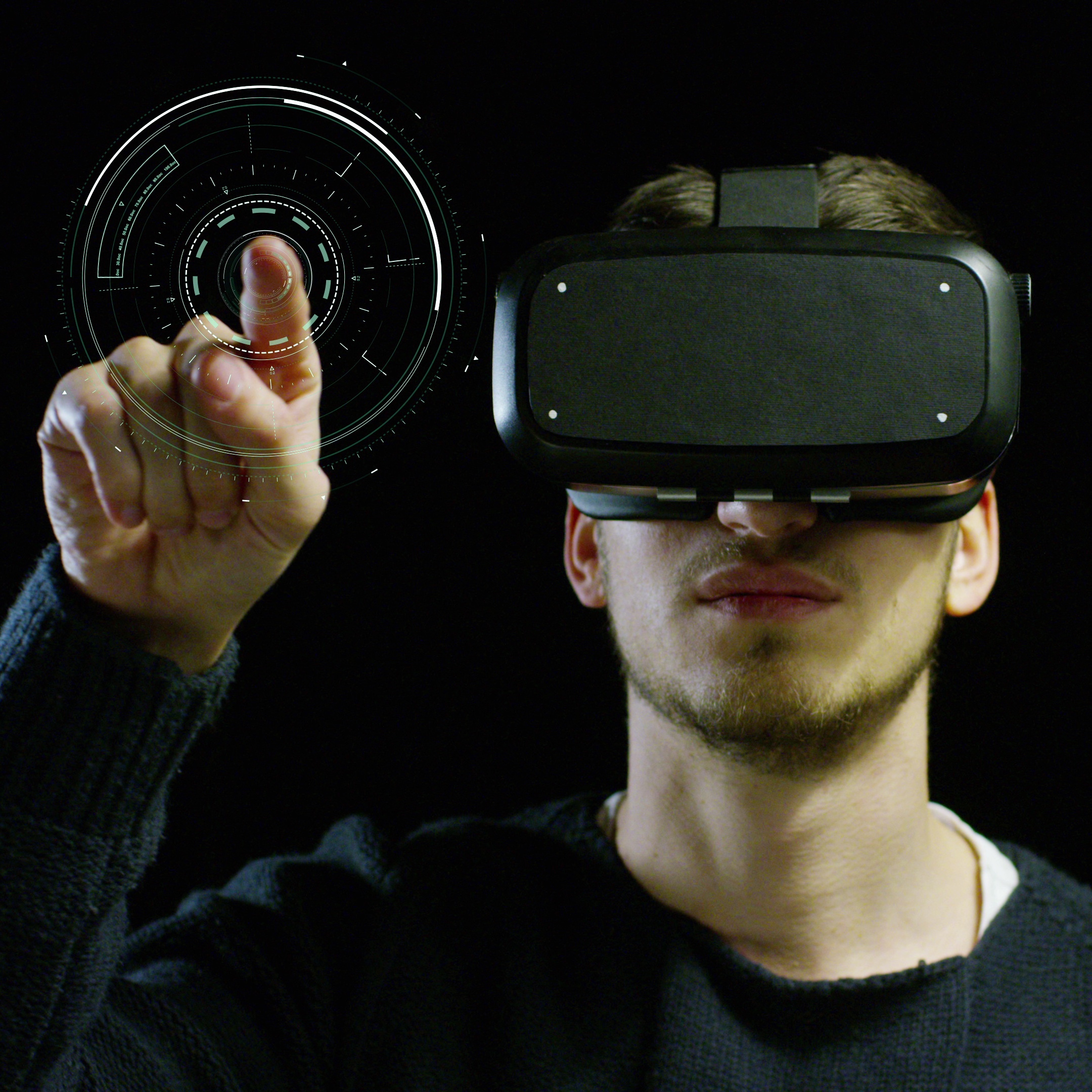Holographic Displays: The Future of Communication is Here
In today’s experience-driven economy, where engagement is the currency, holographic displays are emerging as a game-changing asset. Picture a corporate timeline that transcends flat visuals to become an immersive, three-dimensional journey through a company’s legacy. Imagine the transformative effect on customer perception when a product doesn’t just sit on a shelf but comes alive in a virtual space, offering a 360-degree interactive experience.
Holographic displays are not just about visual spectacle; they are about creating more meaningful and personalized interactions. They offer a level of customization that allows businesses to align the technology closely with their specific objectives, whether it’s educating visitors in a corporate museum or launching a new product line.
With the market for holographic displays projected to soar to USD 3.45 billion by 2028, boasting a CAGR of 23.8%, this technology is setting new benchmarks for how businesses engage with their audiences.
Historical Context
The concept of holography dates back to 1947 when physicist Dennis Gabor introduced the theory while working to improve electron microscopes. In 1962, Yuri Denisyuk from the Soviet Union made a significant advancement by inventing the white-light reflection hologram. This was the first hologram that could be viewed in the light emitted by an ordinary incandescent bulb. However, it wasn’t until 2005 that the University of Texas developed the first real 3D holographic display, marking a significant milestone in the field.
While the early years of holography were primarily experimental, the past decade has seen a surge in practical applications, particularly in corporate and brand experience settings. The technology has evolved from being a novel concept to a viable tool for enhancing customer engagement and interactively conveying complex information.
This evolution has been driven by advancements in related technologies such as spatial light modulators and light field displays, which have made it possible to create more realistic and interactive holograms. These developments have paved the way for holographic displays to move beyond the realm of science fiction and into the boardrooms, corporate museums, and customer experience centers that are the focus of modern businesses.
How Holographic Displays Work
The science behind holographic displays is a blend of optics, computer graphics, and data processing, making it a multidisciplinary field. At the core of this technology are light field displays and spatial light modulators, which manipulate light to create three-dimensional images. Light field displays capture and project all the rays of light in a given scene, allowing for a more realistic representation. Spatial light modulators, on the other hand, control the phase and amplitude of light waves to create the holographic image.
The role of 5G technology in holographic displays is crucial, especially when it comes to real-time data transmission and low-latency performance. 5G’s high-speed data transfer capabilities make it possible to stream complex holographic data without lag, enhancing the user experience.
Digital twins also play a significant role in the functioning of holographic displays. These are virtual replicas of physical objects or systems that can be manipulated in real-time. In the context of holographic displays, digital twins enable more interactive and dynamic presentations, particularly useful in corporate settings for product demonstrations or data visualization.
Artificial Intelligence (AI) and Machine Learning (ML) are increasingly being integrated into holographic display technology. According to Mordor Intelligence, these technologies are enhancing the capabilities of holographic displays by making them more interactive and responsive. AI algorithms can analyze user behavior to adjust the hologram’s interaction in real time, while machine learning models can be trained to improve image quality and depth perception.
Applications of Holographic Displays
The applications of holographic displays are vast and transformative, impacting various sectors from healthcare to automotive, and of course, corporate and brand experiences. Let’s delve into some of these applications, drawing insights from industry examples and innovations.
Teleportation Units
Companies like Protohologram are pushing the boundaries of what’s possible with holographic technology, offering what they term as “holoportation.” Their product, the Epic, provides a life-sized, lifelike experience, making it feel as if the viewer and the hologram are in the same room. Another notable player in this space is Beamboxx, a part of ImmersionX, which focuses on creating immersive experiences powered by technology. One of the standout features is the built-in motion sensor that tracks audience movement and triggers actions based on gestures. This adds another layer of interactivity, making it ideal for product activations and training sessions.
Healthcare
Holographic technology is revolutionizing medical treatment and diagnostics. For instance, RealView Imaging’s Holoscope-i creates 3D volumetric holograms based on medical imaging data. These holograms float in free space, providing medical professionals unprecedented access to a patient’s anatomy during invasive procedures. This technology has the potential to transform telemedicine, surgical planning, and diagnostics, offering a more interactive and precise approach to healthcare.
Automotive
In the automotive sector, companies like WayRay are developing holographic displays to replace traditional car dashboards. Their Deep Reality Display offers an advanced driver-assistance system that transforms the entire windshield into a virtual realm. This technology provides real-time traffic information, navigation data, and even entertainment features, all while minimizing distractions for the driver.
Workplace Applications
The future of the workplace is also set to be transformed by holographic technology. Companies like WeWork are partnering with hologram technology firms to enable tenant companies to use HoloPresence for events like panel discussions and presentations. These holograms offer a more natural type of remote interaction compared to current video conferencing tools.
Entertainment: Concerts, Live Events and Award Shows
Holographic technology is increasingly being used in concerts to create unforgettable experiences. For instance, holograms have been used to give fans the sensation of seeing their favorite artists perform posthumously. The promotion of Michael Jackson’s Xscape album in 2014 utilized hologram technology to bring the late artist back to the stage. Similarly, during the Mnet Asian Music Awards (MAMA) in 2020, a hologram of the injured BTS member Suga was included in the performance, allowing him to be part of the show despite his physical absence.
Holographic projection technology has also made its mark in live events and award shows. For example, Halsey’s performance at the 2018 MTV EMAs utilized Clearview Holographic Effect Rear Projection Technology to create the illusion of her performing in an underwater box. The technology could instantly switch from a clear to an underwater effect, complete with real water falling as rain, adding to the immersive experience.
Market Trends and Challenges
The holographic display market is witnessing ongoing technological advancements, pushing the boundaries of immersive experiences in unprecedented ways. For instance, a research team at Beihang University in China has developed a holographic display that offers a wide field of view. Their system uses a tunable liquid crystal grating and a spatial light modulator (SLM) to achieve a viewing angle of 57.4°, a significant improvement over traditional SLM systems that offer just a 9° view angle. This advancement could make holographic displays more comfortable and practical for human viewers.
The market is also seeing the emergence of interactive holograms with touch sensitivity. Researchers at Japan’s University of Tsukuba are working on creating images that float in the air and are responsive to touch, using ultra-short pulses of laser light. Although still in the experimental stage, this technology could revolutionize the way we interact with holographic displays.
Challenges and Drawbacks
Despite these advancements, the industry faces several challenges. The term “hologram” is often misapplied to various types of 3D images, leading to confusion about what constitutes a true hologram. Additionally, while touch-sensitive holograms are an exciting development, current technology is still uncomfortable to touch, described as feeling like “sandpaper or an electrostatic shock.” As holographic displays move towards commercialization, ensuring their quality and accuracy becomes crucial.
Conclusion – The Next Chapter in Holographic Technology
What truly sets holography apart is its potential to redefine the very fabric of human-technology interaction. The future of holography is not just about sharper images or more realistic projections; it’s about creating a more intuitive, responsive, and human-centric digital experience. Imagine a world where medical professionals can interact with complex biological structures in real-time, or where remote communication transcends the flat screen to become a truly immersive experience.
As we look forward, the integration of Artificial Intelligence and Machine Learning into holographic systems will further personalize and enhance these interactions, making them more intuitive and responsive.
However, as with any disruptive technology, challenges lie ahead. The industry must address issues of standardization, user comfort, and the ethical implications of creating lifelike representations of individuals, both living and deceased. The next frontier is not just to see but to touch, not just to watch but to interact, and not just to display but to engage in a more meaningful, personalized, and contextualized way.



